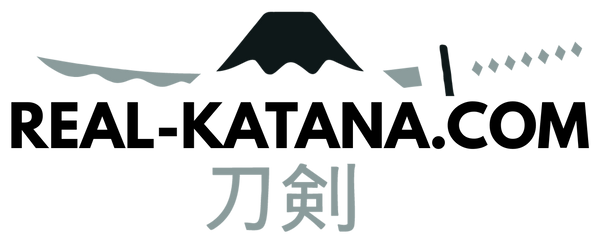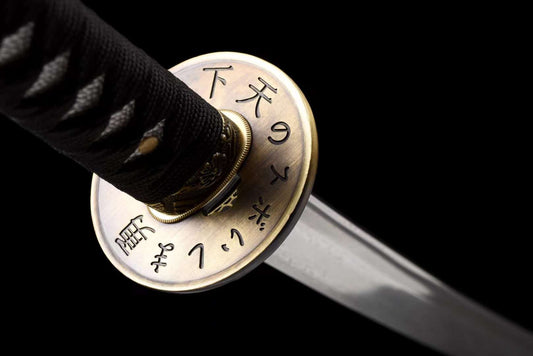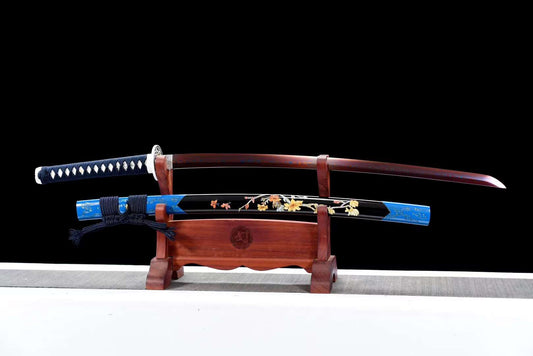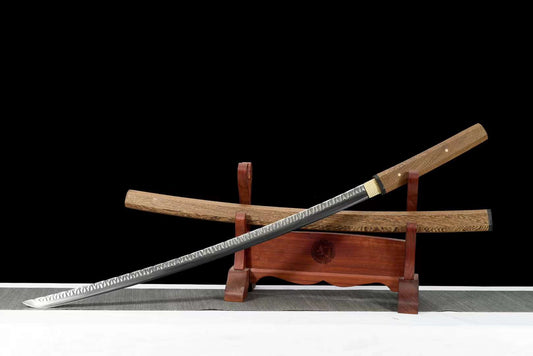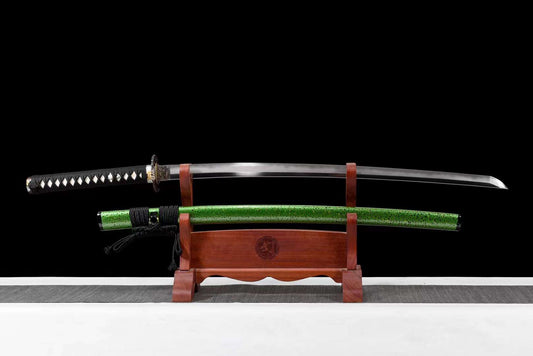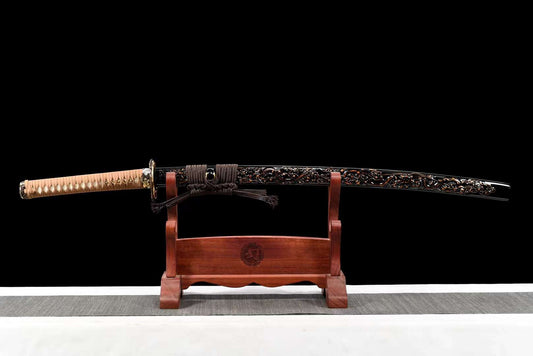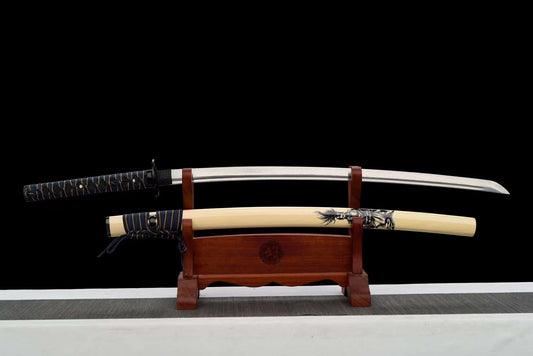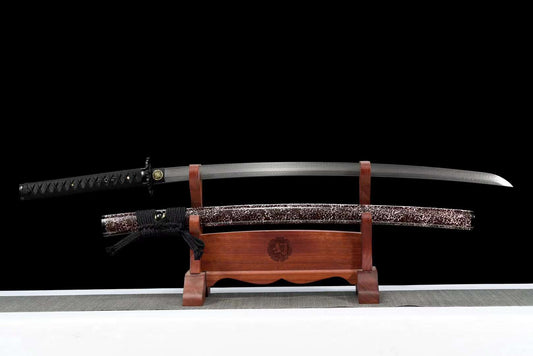Damascus Steel Katana Collection — Layered Grain, Deep Contrast, Gallery-Ready Finish
Elevate your display with a Damascus steel katana that showcases flowing layers, high-contrast etching, and crisp geometry. Pattern-welded construction—often called folded steel—creates distinctive lines that catch light across the shinogi and kissaki, producing a blade that reads beautifully on camera and brings artisanal character to shelves, wall mounts, and glass cases.
What Makes a Damascus Katana Special
The signature look comes from stacking and welding steels into a billet, then folding, twisting, or manipulating the billet to create visible layers. After shaping and polishing, controlled etching reveals the pattern with dimensional contrast. Whether the flow leans toward gentle waves or bold ripples, a pattern-welded katana delivers a striking, one-of-a-kind surface that turns blade steel into visual art.
Pattern, Polish, and Visual Personality
Fine-grain folds create subtle, silk-like texture, while pronounced twists produce dramatic, high-contrast lines that stand out in photos and videos. A well-executed polish keeps bevels clean so highlights travel smoothly from the mune to the edge, letting the layered steel take center stage. Collectors who value artistic steel will appreciate how a Damascus steel katana pairs with curated fittings for a cohesive, gallery-ready silhouette.
Damascus vs. Folded vs. High-Carbon Monosteel
Many enthusiasts use “Damascus” as shorthand for visible layering, while “folded steel” emphasizes the technique that creates the pattern. High-carbon monosteels like 1060, 1095, or T10 highlight crisp lines and dramatic hamon activity; Damascus emphasizes layered grain and etched contrast. Your choice comes down to visual priorities: choose Damascus for flowing texture and depth, or monosteel for maximum clarity and traditional hamon focus.
Choosing Your Damascus Steel Katana
Start with the pattern density you prefer. Subtle, tightly folded blades suit minimalist interiors and calm, traditional themes. Bold, high-contrast waves make a confident statement in modern rooms and streaming setups. Decide whether you want a weight-saving bohi for agility and audible tachikaze, or a no-bohi profile for an unbroken mirror line and added gravitas. Match the blade with fittings that complement the steel—monochrome for contemporary elegance or classic motifs for heritage-inspired displays.
Fittings, Balance, and Display
Expect tight ito wrapping over quality samegawa, a precisely fitted habaki, and a lacquered saya that frames the blade without competing with its texture. Proper balance supports natural posing for photography and events, while consistent geometry ensures reflections travel cleanly across the bevels. The result is a Damascus katana that feels intentional from tsuba to kojiri.
Care & Preservation
Maintain contrast and clarity by storing the blade in a dry environment, wiping surfaces gently after handling, and applying a thin protective oil film when needed. Avoid abrasive contact and edge-to-edge impacts to preserve the polish, etched definition, and linework. A quality katana stand protects the saya and fittings while presenting the layered grain at the best angle to ambient light.
FAQ
Is it real Damascus or just an etch?
The term “Damascus steel katana” commonly refers to pattern-welded blades made by stacking and folding steels to create visible layers. Etching reveals those layers; the pattern is in the steel itself, not merely printed on the surface.
Can a Damascus blade have a hamon?
Some pieces feature differential hardening, but layered patterns often become the main visual focus. If your priority is a pronounced hamon, consider high-carbon monosteels; if you want flowing grain, choose Damascus.
Will the pattern fade over time?
With normal care the contrast remains vivid. Keep the blade lightly oiled, avoid abrasives, and wipe fingerprints promptly to preserve the etched definition and overall polish.
Let the steel tell a story.
Choose a Damascus steel katana whose layers match your aesthetic—subtle and silken or bold and rippled—and make textured, pattern-welded artistry the centerpiece of your collection.
